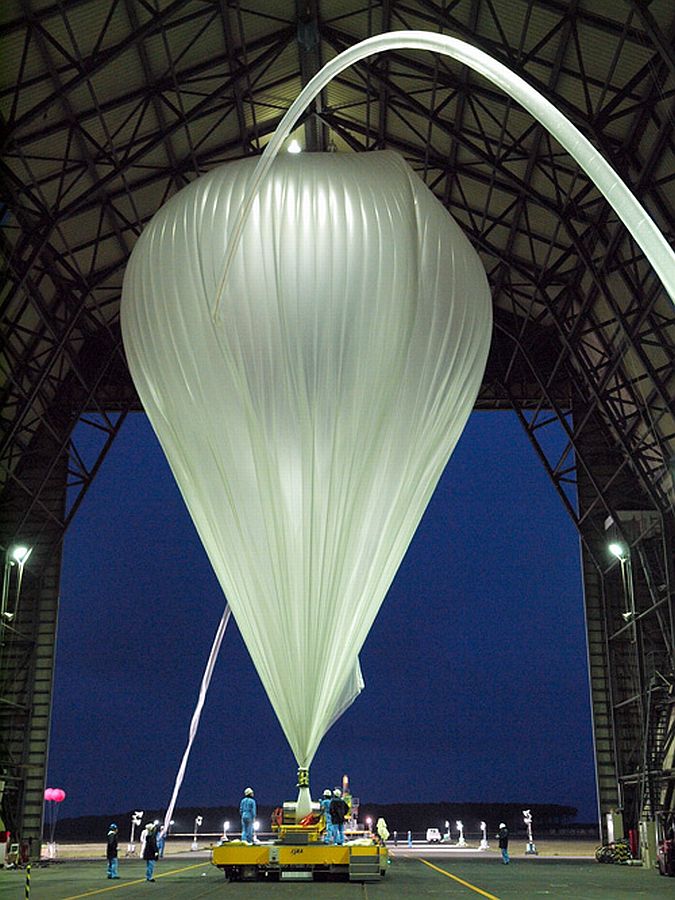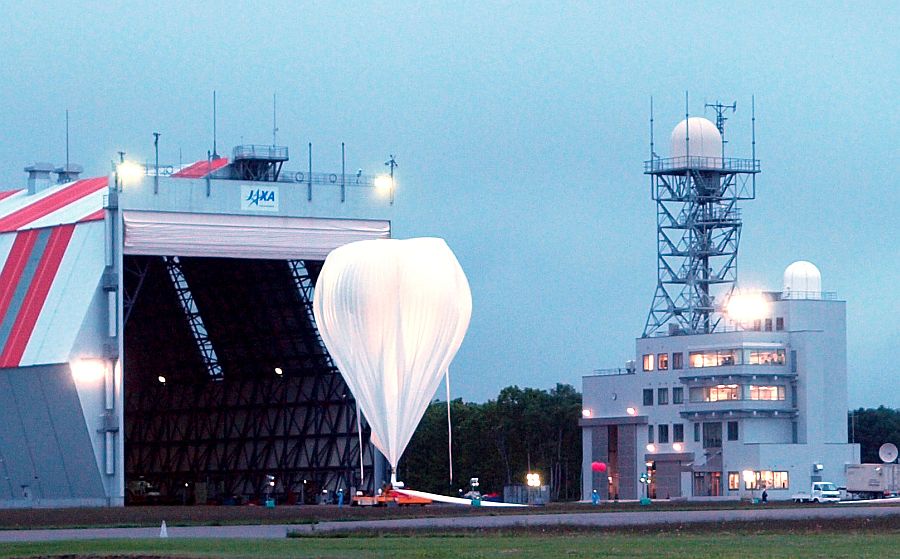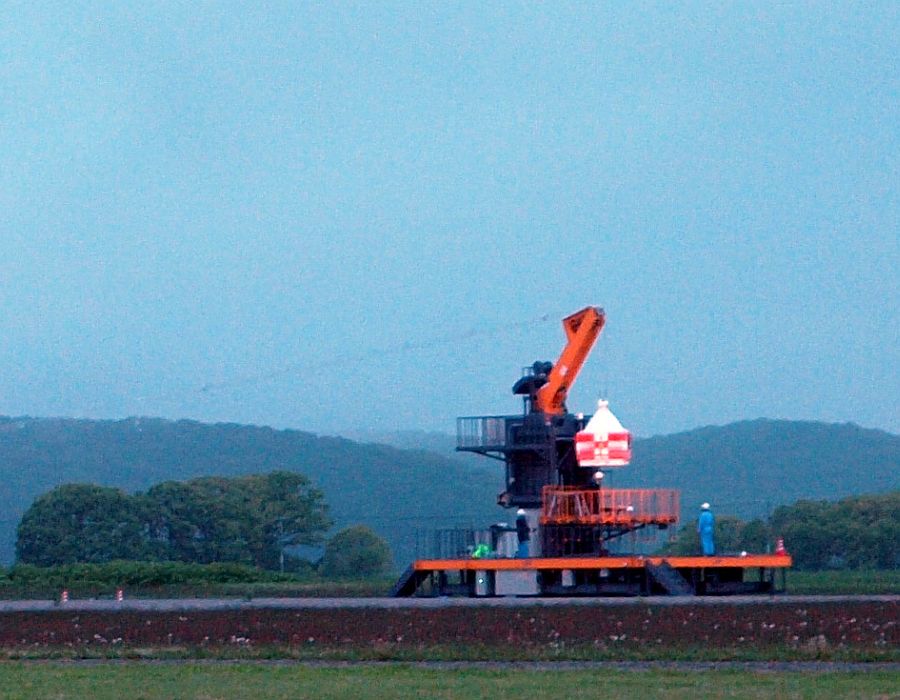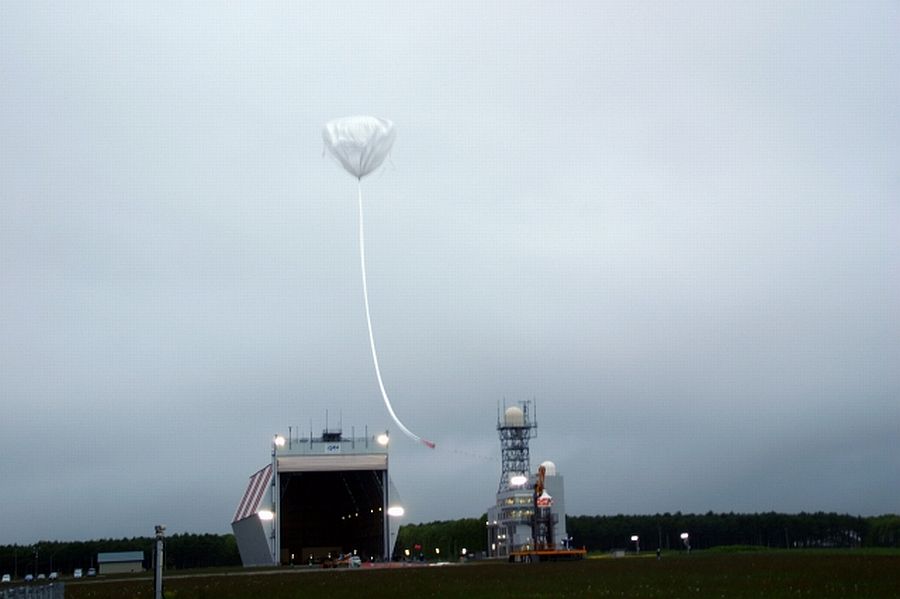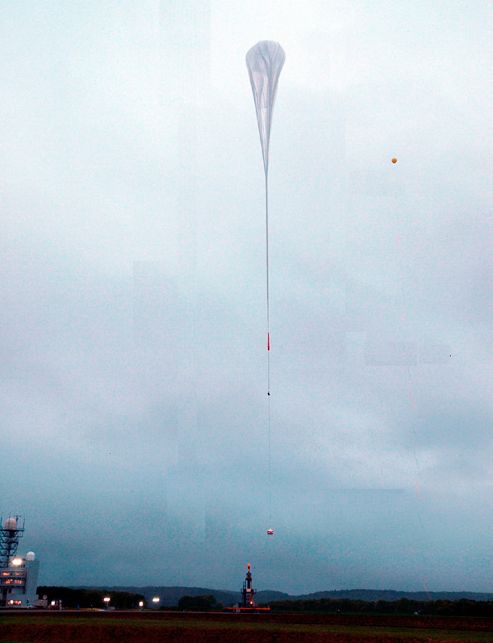Purpose of the flight and payload description
Is a Compton-scattering-type polarimeter sensitive in the energy range from 40 keV to 200 keV and is constructed in a modular fashion with an array of "unit counters".
The unit counter consists of 36 (6x6) pieces of plastic scintillator surrounded by 28 pieces of CsI(Tl) scintillator. These 64 pieces of the scintillator are read out by one multianode photomultiplier (MAPMT) with 64 channels. As incident hard X ray enters into one of the plastic scintillators, Compton scattering occurs and then the scattered hard X ray are absorbed by one of the surrounding CsI(Tl) scintillators. Since these scintillators are segmented, the 2-dimensional scattering direction can be measured and hence the information on the polarization of the incident hard X rays can be obtained.
The instrument's field of view is constrained to 4.8 degrees (FWHM) by a collimator made of molybdenum (1 mm thickness). The side of the unit counter is covered by graded passive shields made of Pb (2mm thickness) and Sn (1mm thickness).
This second flight of PHENEX, counted with eight unit counters which along the monitor counter are all installed inside CsI(Tl) active shields and the whole assembly is housed in a pressure vessel and can rotate along the line of sight. This rotation is necessary to permit removal of systematic effects such as spurious modulation due to individual differences in the scintillators.
Initiated by a trigger signal from any of the eight unit detectors or the monitor counter, the signals of all channels (64x8 channels), the monitor counter (1 channel), and active shields (9 channels) are all digitized by the front-end circuits. The information is processed by the data acquisition system and saved in an USB memory, along with timing information coming from the onboard GPS system.
During flight, a sun sensor was used for the monitor and control of the line of the sight for the PHENEX polarimeter. The sun sensor is a pinhole camera with a two-dimensional position-sensitive photodiode. Its field of view is about 30ºx30º and it can determine the attitude of the polarimeter to an accuracy of about 1 degree. The attitude control system (ACS) has the ability to track the Crab Nebula automatically using the output signal from the sun sensor.
Details of the balloon flight
Balloon launched on: 6/19/2009 at 3:58 jst
Launch site: Multipurpose Aviation Research Field, Taiki-Cho, Hokkaido, Japan
Balloon launched by: Institute of Space and Astronautical Science (ISAS) / Japan Aerospace Exploration Agency (JAXA)
Balloon manufacturer/size/composition: Zero Pressure Balloon model B300 300.000 m3
Flight identification number: B09-02
End of flight (L for landing time, W for last contact, otherwise termination time): 6/19/2009 at 14:45
Balloon flight duration (F: time at float only, otherwise total flight time in d:days / h:hours or m:minutes - ): 10 h
Landing site: Over the sea, 15 kms from Tokachi, Japan
During this second flight the instrument was flown for several hours at an altitude of about 38 km. The system operated well but the time of flight was not enough to perform the desired observation of the Crab Nebula.
Obtained background data however is under analysis.
External references
- PHENEX website X-Ray astronomy group, Osaka University
- Observation of Polarization in Hard X-Ray Region with PHENEX Polarimeter Trans. JSASS Aerospace Tech. Japan Vol. 8, No. Ists27
3727If you consider this website interesting or useful, you can help me to keep it up and running with a small donation to cover the operational costs. Just the equivalent of the price of a cup of coffee helps a lot.

